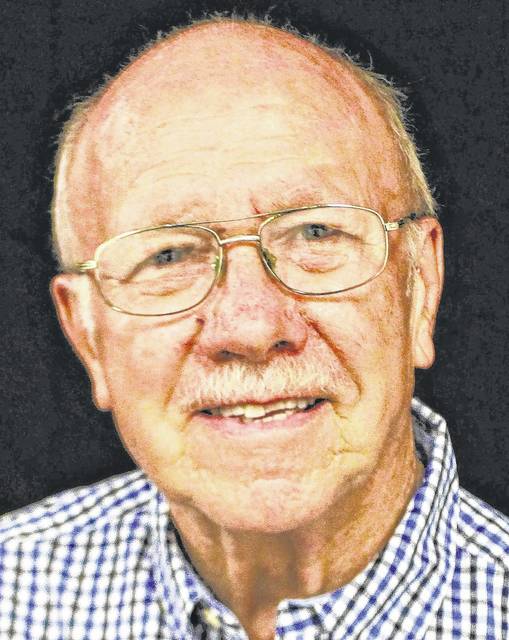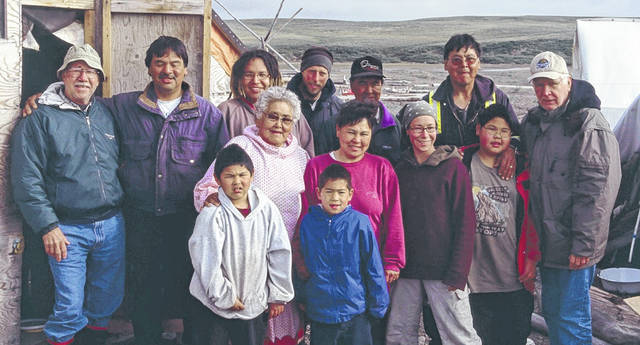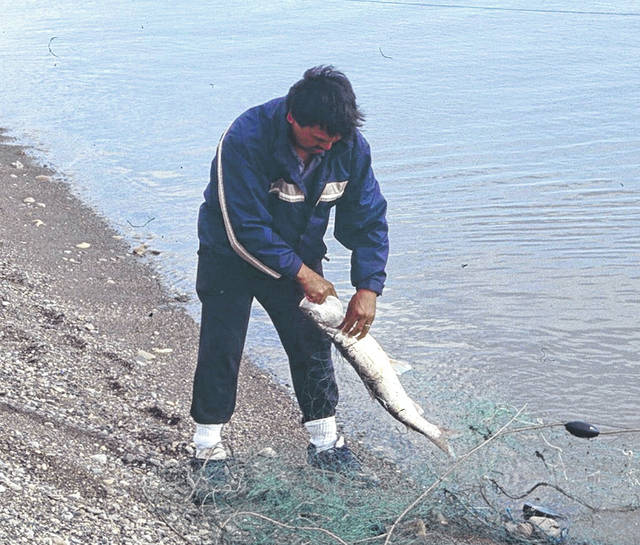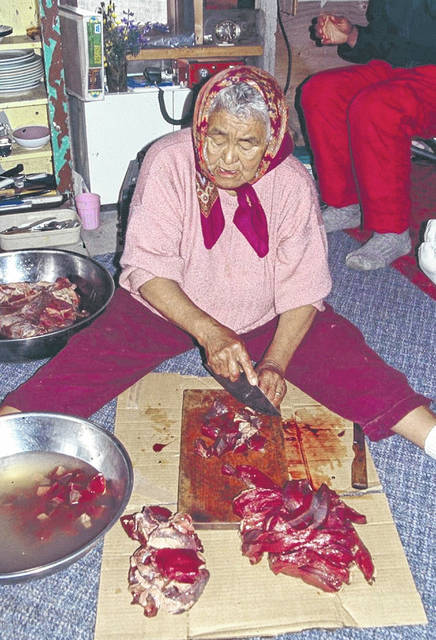




Editor’s Note: This column was written by Neil Snarr over a decade ago, and we’re sharing it with our readers today.
Belugas are small white whales that generally measure 12 to 15 feet. They inhabit the arctic and subarctic waters of North America, Greenland, Europe, and Asia.
I recently had the privilege of spending most of a week with an extended Inuvialuit family that was participating in their annual hunt for these whales. They estimate that they rely on the whales for some 25 percent of their food.
We were staying on Gerry Island four-and-a-half hours up the Mackenzie River from Inuvik, Northwest Territories in Canada. The island, some six miles long and about a mile wide, is situated in the Mackenzie River delta and is used as a seasonal hunting camp. The river empties into the Beaufort Sea of the Arctic Ocean.
The native hunters have four months — June through September — to make their way to this hunting area and bring back the prized meat and fat before the winter closes in. During these four months there are 24 hours of sunlight.
The family I was visiting lives in Inuvik, which was built by the Canadian government back in the mid 1950s. It is a planned community with some 3,200 inhabitants. It is Canada’s largest community north of the Arctic Circle and has all the earmarks of a frontier city.
Currently, most employment is in government and aboriginal (native) offices, transportation, construction, petroleum exploration and tourism. The city has one stop light. It became connected to the Canadian highway system in 1979 when the Dempster Highway was completed.
Being this far north, Inuvik is located on the permafrost, and buildings are elevated, similar (but not as high) to homes in tropical lowlands where flooding is an annual phenomena. Due to the permafrost it is not possible to place the utilities underground, and they are subsequently elevated in what is called utilidors. Water (both cold and hot) and sewer services, and in some areas high-temperature steam heat, are piped through these long box-like structures. There is over 10 miles of these structures which connects to each home or business by an utilidette. The base for streets is some seven feet deep because of the permafrost.
There were 17 of us on Gerry Island, which is considered the property of this extended family as long as they use it. The island is made up of sand and gravel along its perimeter and tundra on the low-lying hills. Six of us were visitors and the remainder were part of the Inuvialuit extended family, including five children.
Like most indigenous people, there is a concerted effort to pass the traditions — in this case hunting whales — onto the younger members. Belugas are not considered an endangered species and some 90 were killed in this area last year by the indigenous people.
The host indigenous family lived in the traditional manner until 1956 when the Canadian government made it possible to move to Inuvik. Prior to that time, they moved from location to location depending on the availability of food.
The most important foods were berries, muskrats, caribou, and fish. During our stay on the island a stationary gill net produced one or two fish some 30 inches long each day. They referred to the fish as “coneys” which, like white fish and herring, are plentiful. We also ate caribou that had been killed and buried in the snow for use during the summer whaling season.
They spend as much time on the island as they need during the summer months in order to kill and preserve the three belugas they need for the remainder of the year.
In mid-July there was relatively little snow left in shaded spots along the water ways. This was the source of our drinking water (and refrigeration as mentioned above), but another tale is also being told. It seems that the permafrost is melting at a rather rapid rate due to global warming.
We were told that the really cold winters no longer occur. Just how much global warming is affecting this immediate region we do not know, but there are certainly indications that it is taking place.
Like indigenous people the world over controversy over land claims has been a major source of conflict. The Canadian government started addressing this in the 1970s and in 1984 the Inuvialuit (pop. ca. 3,000) signed an agreement with the federal government giving them jurisdiction over the Western Canadian Arctic.
This was followed by agreements with other indigenous groups — the largest being Nunavut, which is one-fifth the size of Canada – which was signed in 1999. After nearly a century-and-a-half these people of the north are again at least partial rulers of their own land.
What does one do on a small wind-swept island for several days? Well, someone is always looking for the whales, and when they are spotted, the local people jump in their 18-foot boat with a rifle (30-30), handheld harpoon, and long handled hooks in hopes of landing a beluga.
During our stay we were not so fortunate — there were sightings and shots fired, but the whales were elusive and the surf was too choppy.
Much of the waking hours on the island are spent preparing food and eating. Emma, the matriarch of the extended family, is clearly in charge of this responsibility and is ably assisted by her daughter. The plywood building of 12 by 14 feet is used for the 17 of us to socialize, prepare and eat food, communicate on the two-way radio (mostly with reference to the weather and the movement of whales) and the Canadian Broadcasting Corporation (all run on batteries), play cards, exchange stories and enjoy music by two members of our party.
Aside from this building are two tents and various structures of driftwood which are used to prepare the whale meat.
What are the chances of accompanying a native family on such an undertaking?
Not too likely, but tourism is an emerging industry, and there are local outfitters anxious to assist on a variety of excursions.
Driving up the Dempster Highway is a possibility and one sees a few licenses from other parts of Canada and even some from the U.S.
The easiest source of information is on the Inuvik websites.
Also, be prepared to battle mosquitoes – they can be fierce!
Neil Snarr is Professor Emeritus at Wilmington College.






